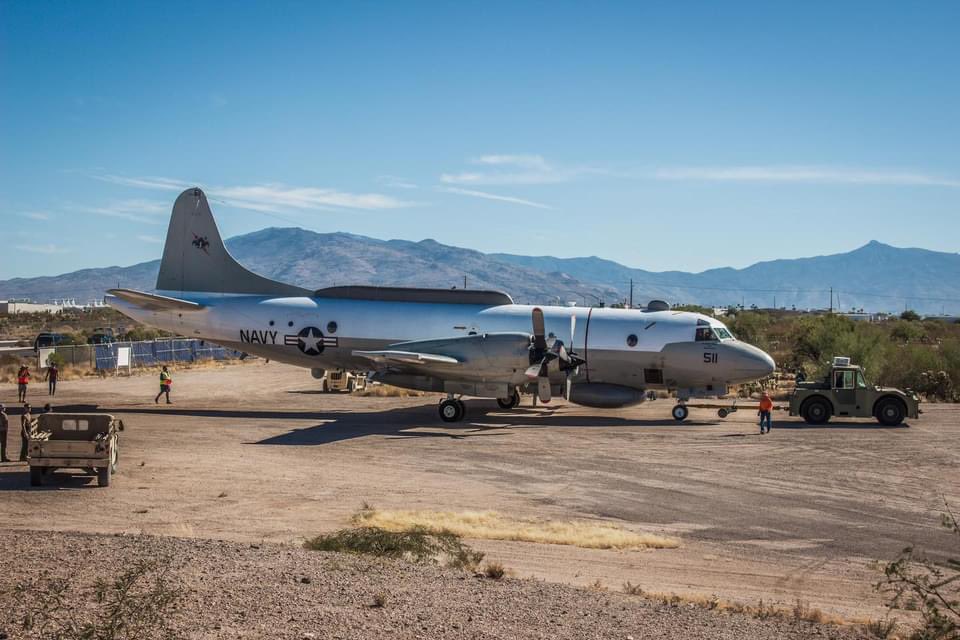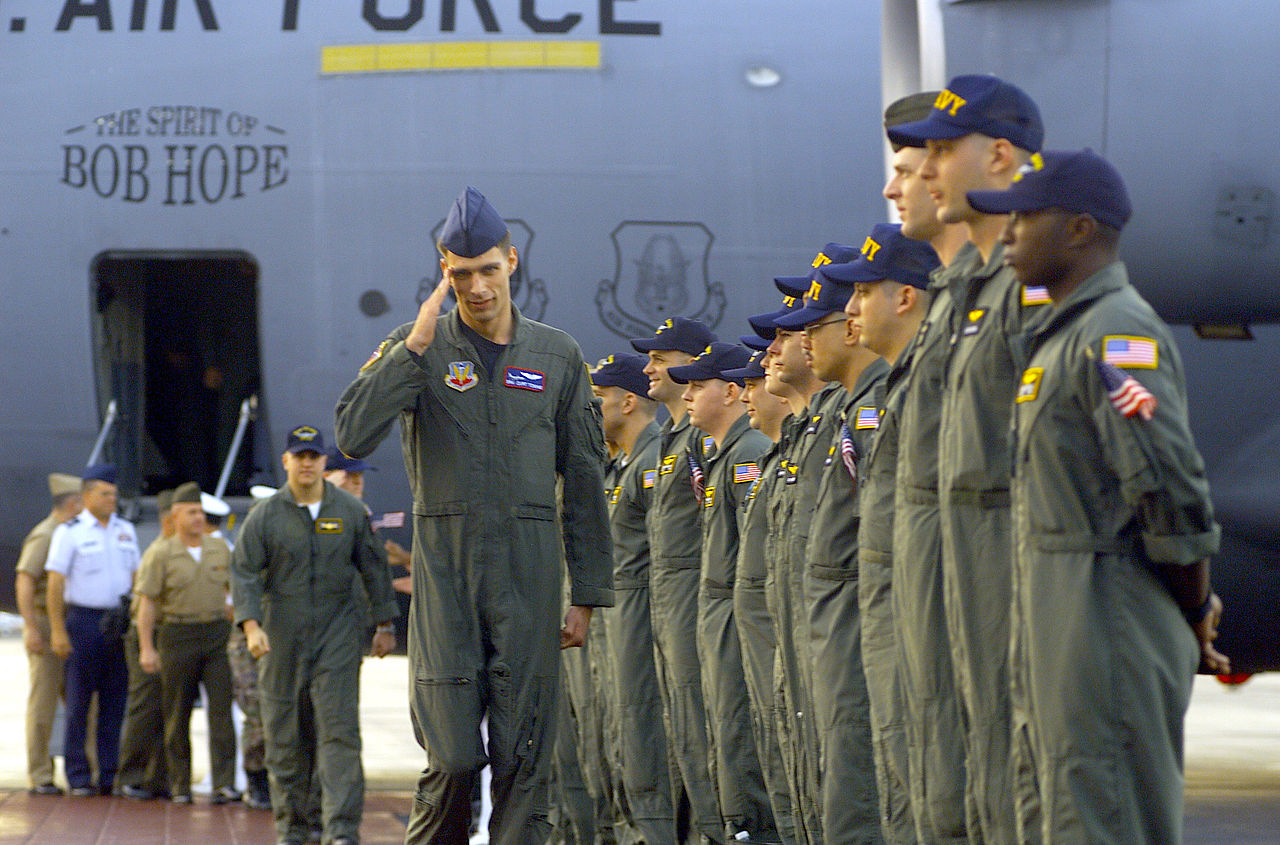The Pima Air & Space Museum in Tucson, Arizona, has welcomed a crucial addition to its collection: the EP-3E Aries II, serial number 156511, which became widely known following a dramatic collision with a Chinese fighter jet during the Hainan Island incident in 2001.
The aircraft, known for its role as a vital intelligence-gathering asset for the US Navy, arrived at the museum on October 22, as confirmed by a recent post on its Instagram account.
Towed from the nearby 309th Aerospace Maintenance and Regeneration Group (AMARG), often referred to as the ‘Boneyard,’ the EP-3E will undergo an extensive restoration process before being showcased to the public.
The EP-3E Aries II, a variant of the P-3 Orion maritime patrol aircraft, has long been recognized as one of the US Navy’s most crucial intelligence-gathering platforms.
Asian NATO: Why India Does Not Back Japan’s Idea Despite Tensions With China & Alliance With Tokyo?
Known for its advanced capabilities in collecting real-time signals intelligence, the EP-3E specializes in intercepting communications and detecting, classifying, and locating emitters — often tied to complex air defense systems.
Despite the planned retirement of the EP-3E Aries II fleet, the US Navy has delayed the withdrawal of its last operational units.

Blasting 19 Torpedoes & 17 Bombs, When US Navy Sank The World’s Biggest Warship & Stunned Japan
The Fleet Air Reconnaissance Squadron (VQ) 1, known as the “World Watchers,” has been the primary operator of this vital signals intelligence platform since its inception. Its counterpart, VQ-2 “Sandeman,” was disbanded in 2012.
However, some of the older airframes have already been retired, including the BuNo 156511, which was involved in the infamous collision with a Chinese Navy J-8 fighter jet on April 1, 2001.
Upon completion of its restoration, this particular EP-3E will serve as a significant symbol of its vital role in intelligence gathering while also reminding visitors of its involvement in a critical juncture in US-China relations.
The Pima Air & Space Museum is enthusiastic about the opportunity to display this rare and historically significant aircraft, marking yet another chapter in the museum’s storied legacy.
Hainan Island incident
On April 1, 2001, a US Navy EP-3E Aries II, designated with serial number 156511, was engaged in a routine reconnaissance mission above the South China Sea, operating out of Kadena Air Base in Okinawa, Japan.
Rafale Fighters ‘Thunder’ Over U.S. Skies; Commemorate French Hero’s Key Role In American Revolution
The aircraft was on a mission to monitor Chinese communication and gather signals intelligence. It was supported by a crew that included six flight personnel and 18 members from the Navy, Marines, and Air Force, all part of the Fleet Air Reconnaissance Squadron One (VQ-1), known as the “World Watchers.”
Flying at an altitude of 22,500 feet off the coast of Hong Kong and within international airspace, the EP-3E crew was gathering vital data when the Chinese interceptors had been launched from Lingshui airbase on Hainan Island, China.
Within moments, two People’s Liberation Army Navy (PLAN) J-8D Finback interceptors appeared on their radar, prompting the EP-3E crew to prepare for a potential encounter and turn back toward base.
The crew was approximately five hours into their intelligence-gathering mission when they found themselves under scrutiny by the two Chinese fighter jets.

The intercepting pilot, identified as Wei, was part of the 9th Naval Division and had gained notoriety among US reconnaissance crews for his aggressive flying tactics. Such maneuvers included high-speed approaches and dangerously close passes, a tactic known as “headbutting.”
One crew member later recounted Wei’s reckless behavior, noting, “He was extra crazy. He would get so close to the plane that you could literally jump from one wingtip to another wingtip.”
In a previous encounter, Wei demonstrated his boldness by getting close enough to show the US crew a piece of paper with his email address.
Despite multiple complaints lodged with Beijing regarding such aggressive intercepts, China maintained that its actions were within its rights to defend what it considered its sovereign airspace.
On this particular day, Wei made a second approach, coming alarmingly close to the EP-3E before retreating again. However, during his third pass, Wei’s fighter jet ventured too near to the EP-3E and was caught in the turbulent slipstream created by the larger aircraft, resulting in a catastrophic collision.
The EP-3E’s pilot, Lieutenant Shane Osborn, later explained, “The aircraft made two close approaches, [with the pilot] making gestures. And then, on the third one, his closure rate was too high, and he impacted the No. 1 propeller, which caused a violent shaking in the aircraft. And then, his nose impacted our nose, and our nosecone flew off, and the airplane immediately snap-rolled to about 130 degrees in the low bank and became uncontrollable.”
One of the EP-3E’s propellers sliced the J-8 fighter in two. Although Wei was ejected from his aircraft, he did not survive the incident.
China presented a different narrative regarding the incident. According to Zhao Yu, the pilot of the J-8 who was flying alongside Wang Wei, he witnessed the collision firsthand.
Zhao described how the head and left wing of the US aircraft made contact with Wang Wei’s plane, causing the left propeller of the US plane to severely damage the vertical stabilizer of Wang Wei’s aircraft.
Concerned for his colleague’s safety, Zhao warned Wang Wei that his vertical tail had been destroyed and advised him to maintain control of his aircraft. Wang Wei acknowledged the warning.
However, approximately 30 seconds later, Zhao noticed that Wang Wei’s plane was rolling uncontrollably to the right and was in a nosedive.
Realizing the severity of the situation, Wang Wei requested permission to eject from the aircraft. Zhao granted him permission, but shortly after that, he lost all communication with Wang Wei.
Meanwhile, after the impact, the wreckage from the Chinese fighter struck the EP-3E, resulting in major damage to its fuselage, radome, two propellers, and one engine.
The impact sent the EP-3E rolling upside down as the crew grappled with rapid cabin depressurization, and the aircraft plummeted approximately 14,000 feet in a violent descent.
Faced with a dire situation, Lieutenant Shane Osborn, the pilot of the EP-3E, fought to regain control of the aircraft. With the aircraft heavily damaged and lacking functional flaps, Osborn evaluated his options.
He considered ditching the aircraft in the ocean but ultimately decided to attempt a recovery at Lingshui airbase, which was roughly 20 minutes away. The challenges were immense, but it was their best chance for survival.
The damaged EP-3E successfully executed an emergency landing at the People’s Liberation Army Navy’s Lingshui Airfield just ten minutes after Zhao Yu had landed at the same base.
The crew’s final communication from the aircraft to the Pacific Command was succinct: “We’ve landed, and we’re okay.”
US Crew Detained After Emergency Landing
Upon arriving at Lingshui, the EP-3E was escorted by Chinese military trucks to the runway, where soldiers surrounded it. About 13 hours after the incident, the PRC’s Ministry of Foreign Affairs and state media publicly acknowledged the collision between US and Chinese military aircraft.
The Ministry claimed the EP-3 suddenly veered toward the PLA fighters, causing a crash. The PRC also alleged that the EP-3 entered “China’s territorial airspace” without permission and landed at Lingshui shortly after.
While detaining the 24 US crew members, the PRC stated that they had made “appropriate arrangements” for them.
During their detention, the crew was subjected to regular interrogations by the Chinese government. After extensive diplomatic negotiations, China agreed to release the crew 11 days later.
According to the Naval History and Heritage Command, “While they had possession of the EP-3, the Chinese stripped it of the classified intelligence and equipment that was onboard. Although the crewmembers began emergency destruction efforts to destroy all of the classified intelligence and equipment that had been onboard the aircraft as soon as LT Osborn made the call to land on Hainan, the Chinese were still able to gather a large amount of material from the aircraft.”

On April 12, the 24 crew members left Hainan, flying to Guam on a chartered US airliner. From there, they were flown on a US Air Force C-17 to Hawaii for debriefing at the US Pacific Command before being reunited with their families.
Throughout the standoff, the PRC Foreign Ministry demanded an official apology from the United States. Washington refused to issue a formal apology.
However, then-President George W. Bush expressed regret, stating that he was saddened by the loss of the Chinese pilot and aircraft while also emphasizing the importance of bringing the American crew home. Bush urged that the incident should not destabilize US-China relations.
Meanwhile, the United States also successfully secured the return of the damaged EP-3E, but China insisted it be dismantled before leaving. Lockheed Martin specialists were tasked with the process.
Once dismantled, the parts were transported to Marietta, Georgia, aboard two Antonov An-124 cargo planes. In Georgia, the aircraft was reassembled using sections from an NP-3D and the wings of a decommissioned P-3B. Following its reconstruction, the EP-3E completed its first test flight on November 15, 2002.
It then underwent further modernization and maintenance at L3’s facility in Waco, Texas, before being redeployed. The aircraft remained in active service as of September 2020, when it was spotted flying over the East China Sea, continuing its critical role in intelligence gathering.
According to reports, it was still operational in April of this year.
- Contact the author at ashishmichel(at)gmail.com
- Follow EurAsian Times on Google News




